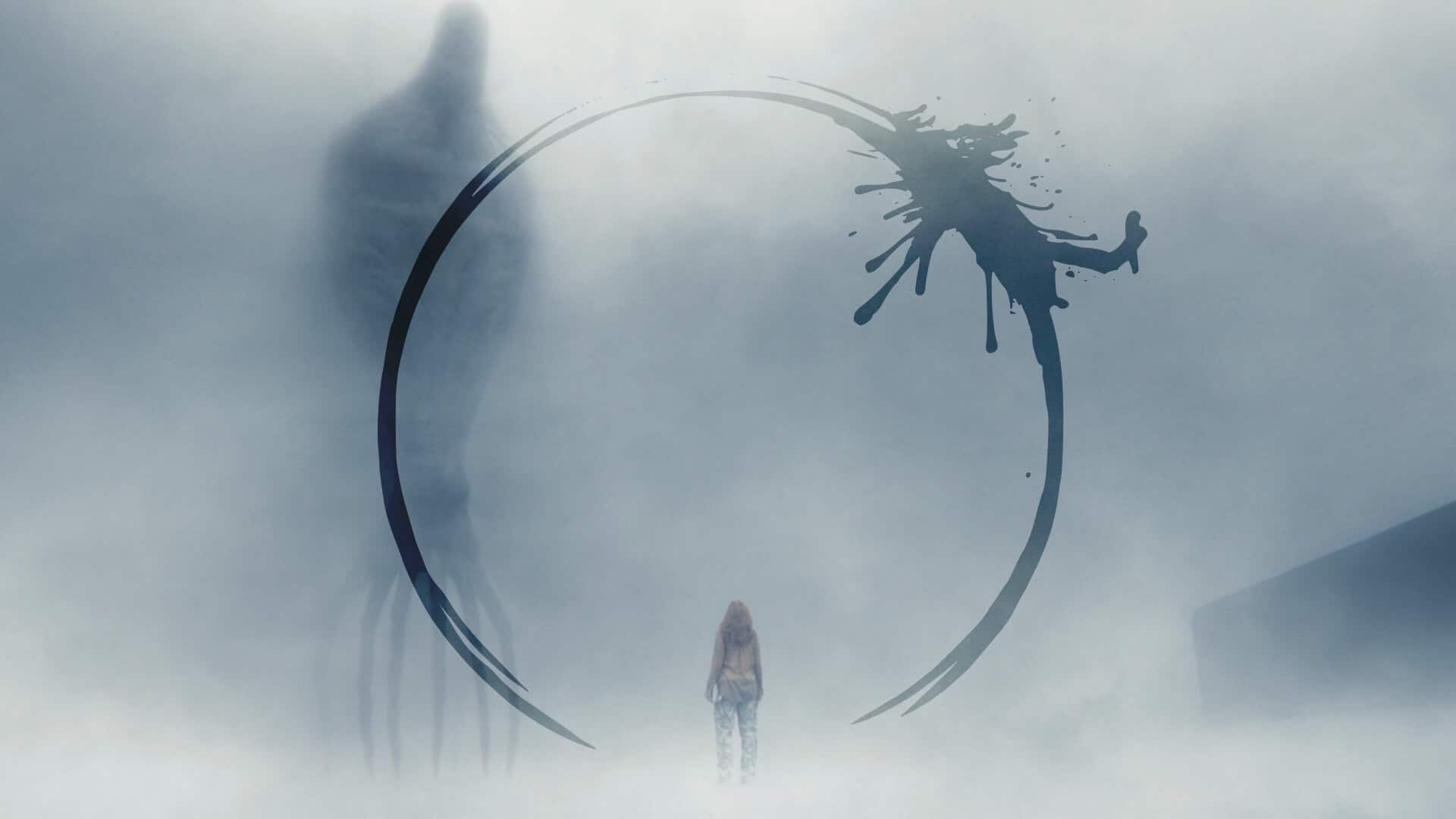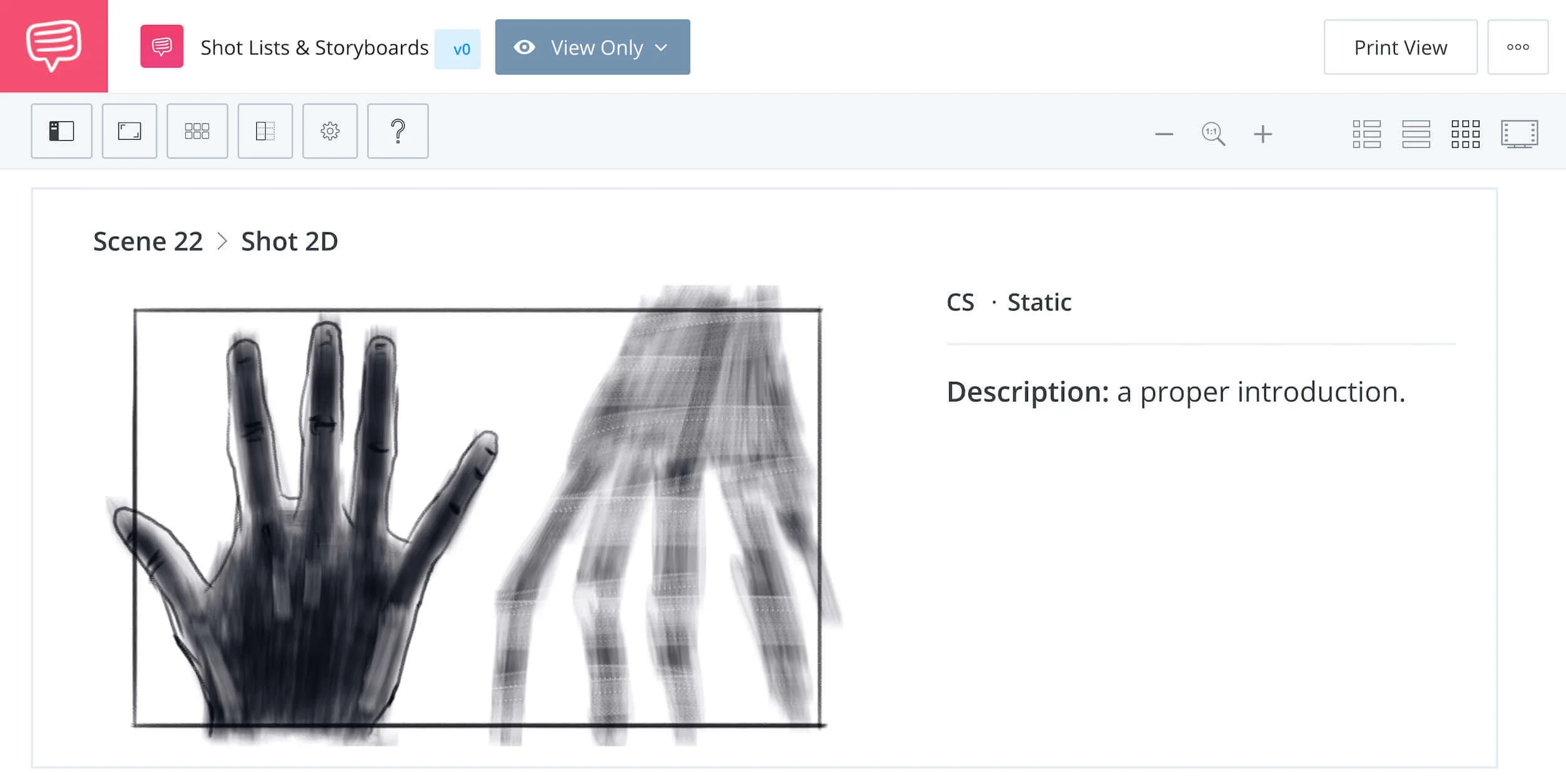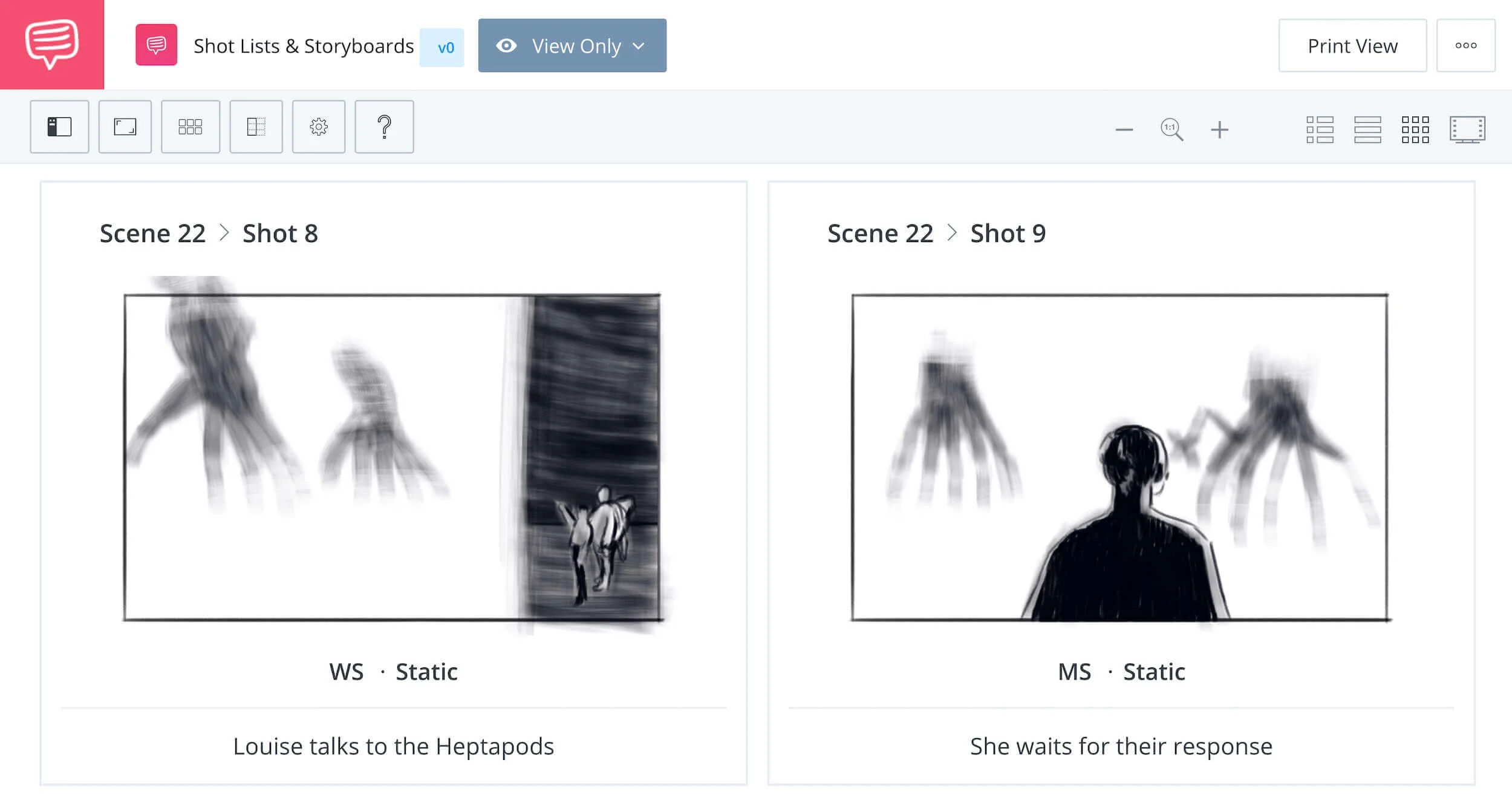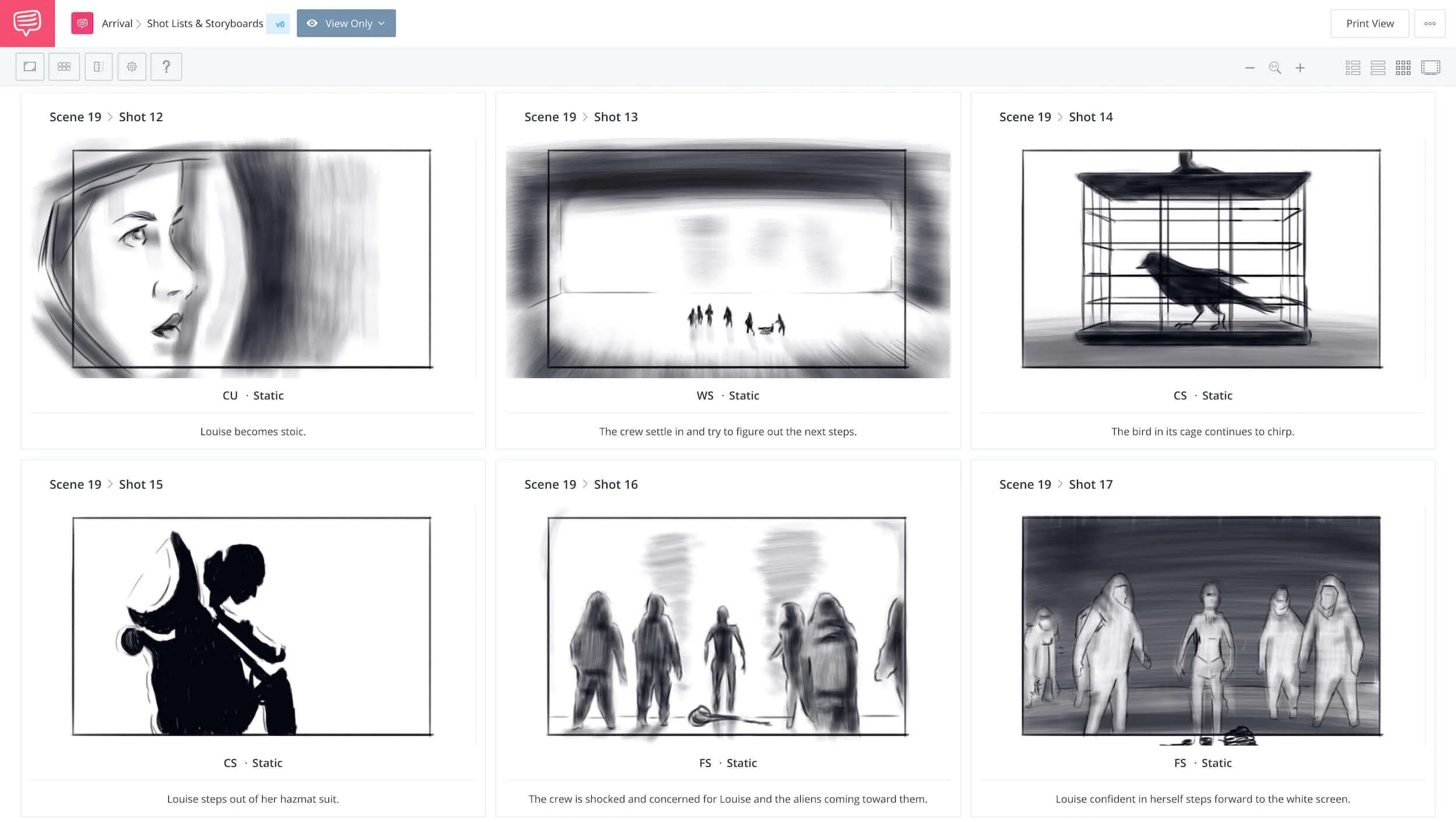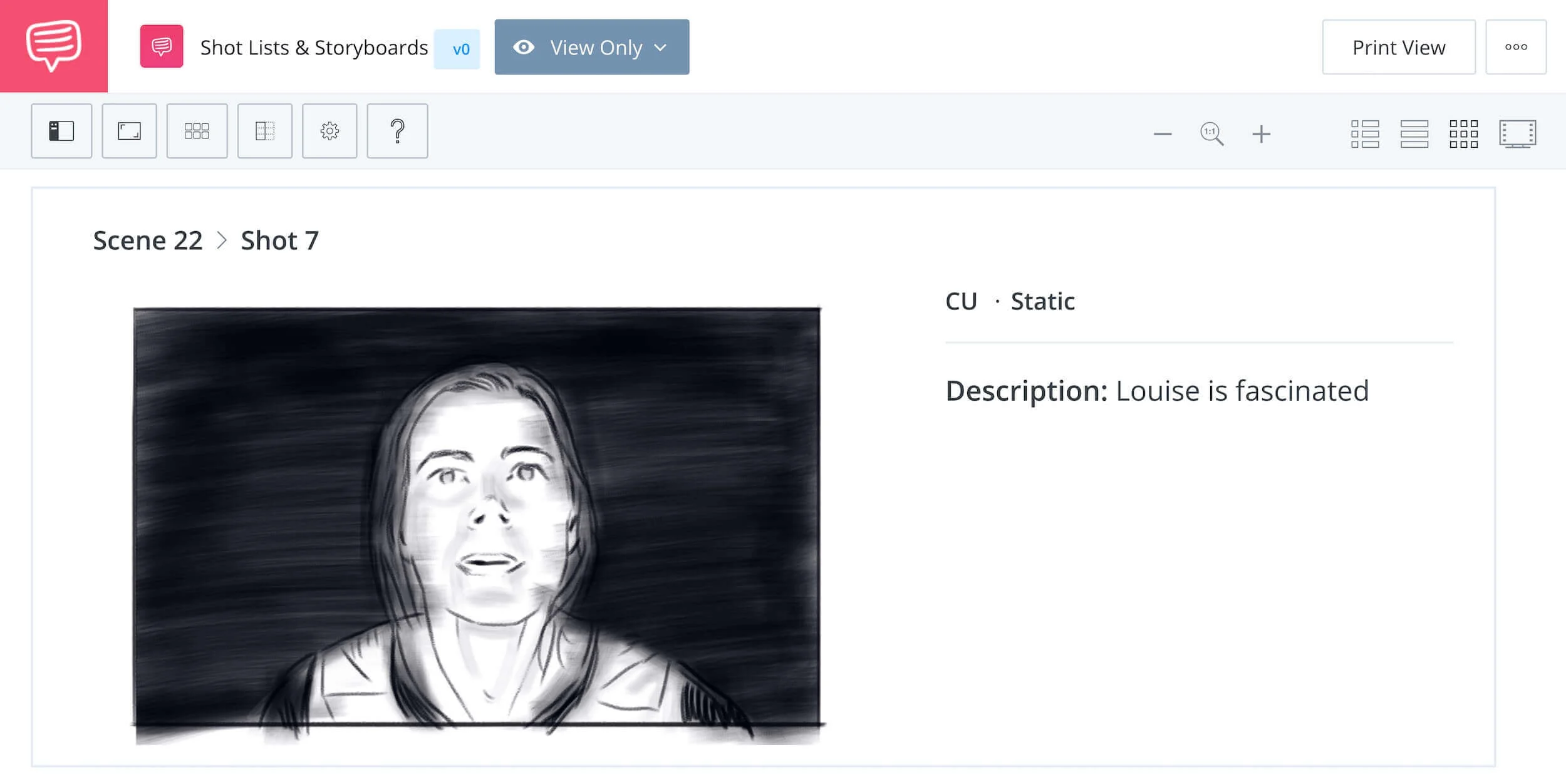The 2016 linguistically-focused sci-fi thriller Arrival is one of five excellent films directed by Denis Villeneuve in as many years. Few filmmakers can maintain such high levels of both quality and quantity as Villeneuve. Join us in our Arrival movie analysis.
Arrival Movie Analysis
Making something alien feel familiar
The intent of any particular film determines the way in which it presents an alien entity. If the alien is intended to be a frightening threat, as with the xenomorph in Alien, then the design and presentation of the creature is typically removed from a sense of humanity.
Stripping away all that is familiar makes it harder for a viewer to feel comfortable in the presence of a creature. Examples of creepy creature designs, far removed from humanity, include films like Alien, The Host, Cloverfield, Edge of Tomorrow, and A Quiet Place.
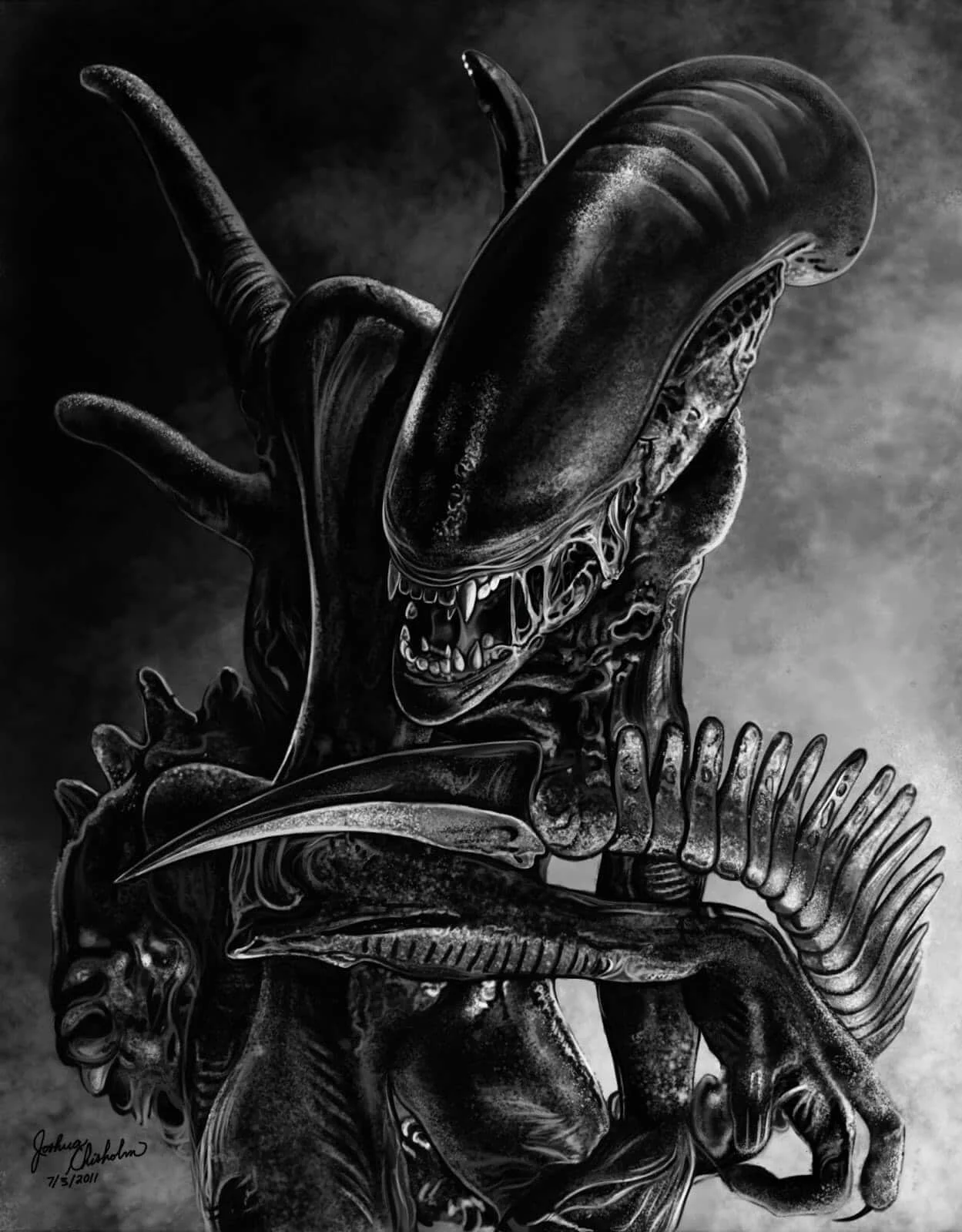
Xenomorph artwork
On the flip side, the more familiar an alien appears, the more comfortable we feel around it. More human-like creature designs are used in films where the alien isn’t a threat but friendly. You’ll find familiar looking aliens in things like Avatar, Coneheads, and E.T.
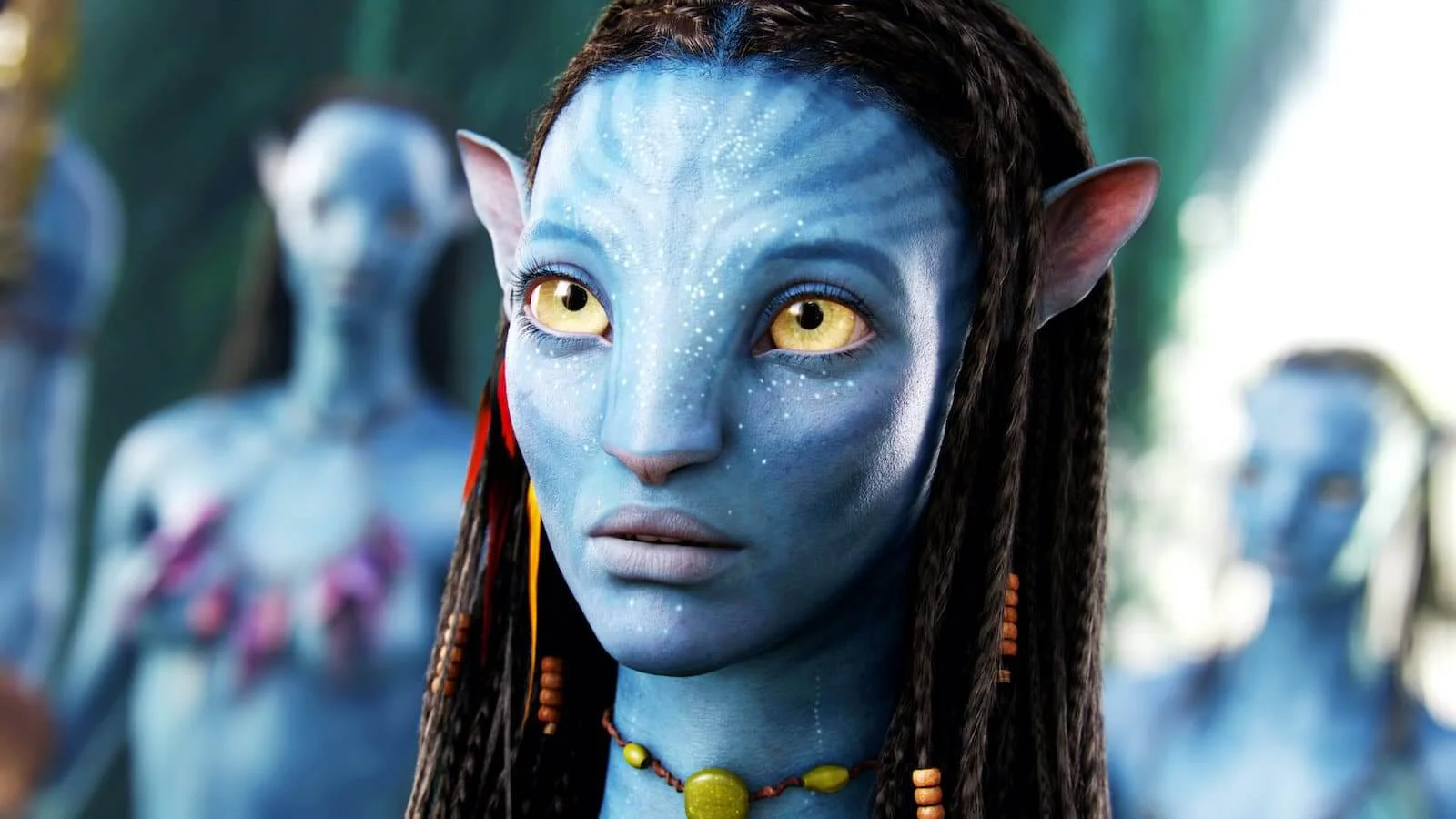
Na’vi from Avatar
Then there are films that straddle the line between familiar and alien, mixing and matching body parts similar to our own anatomy with physiology we’ve never seen before.
This type of design is used when a film wants the viewer to be unsure of how to feel toward its alien. This includes films like District 9, Predator, The Hidden, and… Arrival.
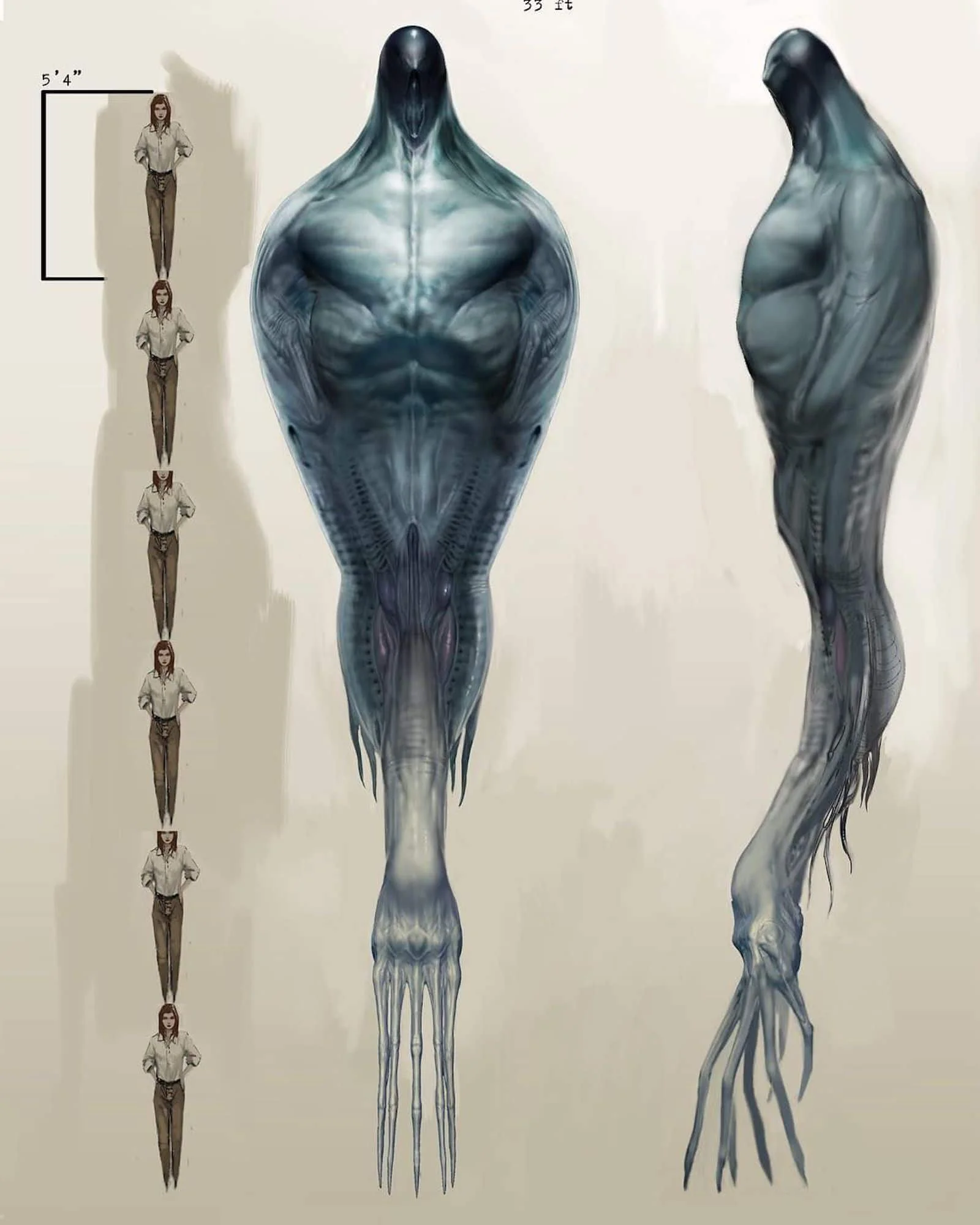
Heptapod scale concept
Balancing the anatomy of the alien in this way allows the alien’s presence to still be unnerving and uncomfortable, while also allowing the reasonable possibility for attempts at friendly communication.
For a closer look at the balance between familiar and unfamiliar aliens, we brought storyboards for Arrival into StudioBinder. And if there’s one shot worth focusing on in our Arrival movie analysis, it’s this one:
Arrvival • Hand and Heptapod • View Full Storyboard
This single shot perfectly encapsulates the presentation of the Alien. Placing the alien side by side with a human hand showcases their anatomical similarities, while contrasting their numerous differences.
Arrival • Heptapods Encounter • View Full Storyboard
Analysis of the movie Arrival
How to prolong suspense
Any Arrival movie analysis would be incomplete without praising the meticulous work of director Denis Villeneuve. The meticulous blocking and staging of his characters and camera elevates already strong source material to new cinematic heights.
In this video, Villeneuve explains his particular approach to directing such a moody and tense science fiction film.
How Denis Villeneuve directed Arrival
With a deft hand, Villeneuve prolongs the suspense, even as exposition rolls out. If you undergo analysis of any Arrival movie scene, you will find a careful balance between intrigue and information, never tipping its hand completely.
The aliens are kept at a distance behind glass, they are shrouded in fog and a full view of their entire bodies is withheld from us until the third act of the film.
Villeneuve orchestrates our comfort level by carefully controlling what information we receive and what information is withheld.
Arrival • Observation Window • View Full Storyboard
Related Posts
Analysis of Arrival Movie
How shot choice reveals character
The shot choices in this scene do not stop at revealing information about the aliens, they reveal information about our human characters as well.
Throughout the entire sequence, Louise’s reactions to the aliens tells us just as much about her as they do about the heptapods. In our Arrival movie analysis, we found that this shot held tremendous significance:
Arrival • Louise Looks Up at the Heptapods • View Full Storyboard
Louise’s expression is one of joyous discovery. The choice to use a high angle shot looking down at her is somewhat unorthodox, but extremely effective. The high angle conveys the same sense of Louise being a child looking up at a respected role model.
We often use a character's reaction to understand how we too should feel about a given situation. Louise's reverence gives us "permission" to be OK with these aliens as well.
We'll leave you with Villeneuve elaborating further on his directing process and how he came to direct Arrival.
Extensive interview with Denis Villeneuve
Up Next
Villeneuve directing style
If you enjoyed our Arrival movie analysis, then take a look at the other Denis Villeneuve posts right here at Studiobinder. For additional insights into Villeneuve’s process, be sure to check out this post on his films and his various directing techniques.
Up Next: Villeneuve Directing Techniques →
Showcase your vision with elegant shot lists and storyboards.
Create robust and customizable shot lists. Upload images to make storyboards and slideshows.
